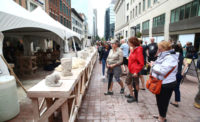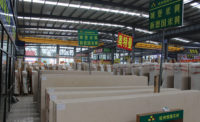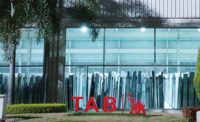The Royal Alberta Museum is the largest museum in Western Canada. It originally opened in 1967 and was called, at the time, the Provincial Museum of Alberta. In 2011, construction of a completely new museum was announced and started in 2014. The museum was finished two years later in 2016. For the next two years, the 2.4 million objects from the original museum were moved to the Royal Alberta Museum. To house these objects, Indiana limestone, which was quarried by Indiana Limestone Co. that is owned by North American stone producer Polycor, was selected. The architectural firm was Dialog, part of a design team with Ledcor and Lundholm Associates.
“The goal was to create an identifiable focal point in the downtown Edmonton Arts District by building a new museum to replace the older one that was constructed in 1967,” said Steve Schrenk, digital media director and design consultant for Polycor. “New exhibition spaces were incorporated into the design and the result has doubled the museum’s floor space, compared to the existing building. The site is where two of the province’s main survey grids converge — the British system, where the streets align with north, south, east and west, and the French system, with the streets running parallel to the nearby North Saskatchewan River. This convergence is reflected in the layout of the museum; the main galleries were designed to align with the French grid and the feature gallery aligns with the British grid.”
Stone was an important choice because of the weather in Edmonton, which can vary from negative 40 degrees to 95 degrees throughout the year. Indiana limestone proved appropriate for the application because of its ability to withstand ongoing, long-term freeze/thaw cycles.
“The museum’s exterior was originally planned as precast concrete, but Indiana limestone was chosen when estimates showed that it could be provided for the same price and in the required size, but also providing a significant added environmental benefit over precast concrete which contributes to significant levels of CO2 emissions and fossil fuel consumption in its manufacturing process,” said Schrenk. “One of the goals of the museum was to achieve LEED Silver certification, but they exceeded that and wound up receiving LEED Gold certification for the project, in part due to the use of North American quarried Indiana limestone from an NSC-373-approved quarry. Also, there were some limitations with the concrete product that was specified that wouldn’t allow them to do what they wanted to do, but the limestone met the specification.”
The project used 2- x 5-foot Indiana limestone panels with a thickness of 2 inches — totaling 82,000 square feet of exterior facade cladding and interior feature walls. “The new Royal Alberta Museum set out to thoughtfully preserve and share the story of Alberta and honor its past in a new way,” said Schrenk. “It’s been reassuring to hear how the perception of the building is that it’s inspiring and its design serves as a connection to generations to come.”








